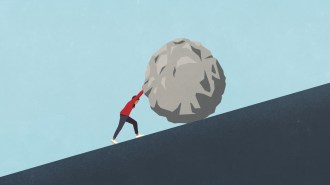The first appearance in the United States of the cattle-killing ailment known as mad cow disease has rocked the beef industry and raised fears of an outbreak of a similar deadly brain disease in people. However, the threat to both people and animals in the United States remains low as long as the government enforces specific feed-processing and slaughter regulations, risk analysts say.

The most crucial safeguard, according to the researchers, is a ban put in place in 1997 that prohibits feeding potentially infective animal parts to cattle. That practice, which provided cheap protein for animal feed, is the main route of transmission of the misshapen proteins that cause mad cow disease, which is formally known as bovine spongiform encephalopathy (BSE). The proteins, called prions, may spread when animals consume brain, spinal cord tissue, bone particles, eyes, and small intestines of infected animals. In people, prions occasionally cause the lethal brain condition known as variant Creutzfeldt-Jakob disease, or vCJD.
New safety measures that the government has announced in recent weeks might further reduce the odds of a U.S. outbreak of vCJD in people, says George Gray of the Harvard Center for Risk Analysis in Boston. One of these rules would delay the sale of meat from cattle carcasses until they’re tested for BSE, and another would ban or restrict the use of processing technologies that may mix bits of nerve tissue with meat.
The discovery that a dairy cow born in Alberta, Canada, and slaughtered on Dec. 9, 2003, in Yakima, Wash., had BSE comes 7 months after the first case in Canada and 17 years after the initial identification of the disease in England. More than 150 Europeans have developed vCJD after eating infected meat, although most of those people may have been infected before widespread testing of cattle and other safeguards went into effect in 1996. It typically takes 10 to 20 years for vCJD to develop.
Mad cow disease may exist undetected in other U.S. cattle, but even if it does, the disease’s prevalence is probably low, says statistical epidemiologist Christl Donnelly of Imperial College in London. She points out that the stricken Washington cow is the country’s only BSE-positive animal among the approximately 20,000 cattle tested for the disease last year.
By contrast, BSE infected as many as 40 percent of cattle born in Great Britain in 1988 and at least 2 million British cattle in all, Donnelly estimates. Yet not more than about 220 cases of vCJD should ultimately result from the British outbreak, she and her colleagues predicted last year in the online journal BMC Infectious Diseases.
As long as relatively few U.S. cattle become infected with BSE, few if any people will develop vCJD from eating American beef, she says.
The main danger is the possibility of BSE’s spread among U.S. herds, says Donnelly. A smoldering epidemic could devastate the cattle industry and put consumers at a low risk of vCJD for decades.
If well observed, even the limited 1997 feed ban would prevent any sizable U.S. outbreaks of BSE or vCJD, says Gray. He and Joshua Cohen, also of Harvard, reached that conclusion last October after revising an earlier model of an epidemic for the Department of Agriculture. Even assuming that infected tissue illegally ends up in cattle feed, only a handful of cattle would be newly infected for every 10 sick animals that enter the country and the outbreak would peter out, they calculated.
To head off epidemics caused by prions or other foodborne microbes, U.S. officials now plan to implement a national system for tracking individual cattle from birth to the grocery store.
Epidemiologists used such a system, which was already in place in Canada, to guide their response to that country’s earlier BSE case (See Calling All Cows).
****************
If you have a comment on this article that you would like considered for publication in Science News, send it to editors@sciencenews.org. Please include your name and location.
To subscribe to Science News (print), go to https://www.kable.com/pub/scnw/
subServices.asp.
To sign up for the free weekly e-LETTER from Science News, go to http://www.sciencenews.org/subscribe_form.asp.







